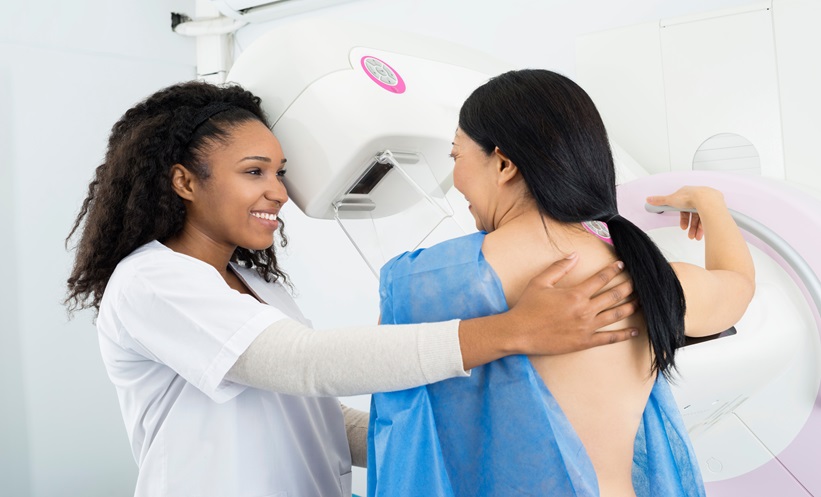Felice Petraglia | Professor of Obstetrics and Gynecology, University of Florence, Italy; Chair of the Maternal-Infancy Department, University Hospital Careggi, Florence, Italy
Citation: EMJ Repro Health. 2024;10[1]:49-51. https://doi.org/10.33590/emjreprohealth/WIMM2395.
![]()
Can you share the pivotal moments that led you to a career path in Obstetrics and Gynaecology?
At the end of medical school, it is difficult to choose a path for the future, a specialty for the next 50 years! Finding a good mentor is very important, and I was lucky to choose one of the youngest and best professors in my medical school. He was a Professor of Obstetrics and Gynecology and he suggested doing the resident programme while also conducting some basic science research. This programme was very stimulating and gave me a great background. Understanding the research was also useful to realise how fascinating the field of reproductive science is; a multidisciplinary area which goes from hormones to cancer, to pregnancy, and the placenta.
With over 1,000 publications to your name, how has your research focus changed throughout your career?
Yes, I have been an author and co-author for a large number of publications, starting early in my career. Following my mentor’s suggestions, I started working on neuroendocrinology, specifically focusing on the hypothalamus–pituitary ovarian axis and neurotransmitters and neuropeptides involved in the control of reproductive hormones. The priming experience was done in the lab of Pharmacology at the University of Milano, a crucial imprint. After the end of my residency programme, I was a visiting scientist at the Salk Institute in La Jolla, San Diego, California, USA, and I developed the field of neuroendocrinology of the placenta, opening a new field for research. The discovery of the secretion of corticotropin-releasing hormone, inhibin, and activin from placental cells allowed the most prestigious publications in Nature and Science. Upon my return to Italy, I continued to study the possible clinical implications of placental neuropeptides, particularly those related to stress. Thereafter, as I progressed in my academic career, my scientific and clinical interests in the last 25 years have been focused on endometriosis, abnormal uterine bleeding, uterine fibroids, and polycystic ovary syndrome (PCOS), and their impact on quality of life, fertility, and pregnancy.
As a pioneer in the exploration of neuroendocrine peptides and growth factors in the placental-foetal unit, how has this understanding revolutionised the field of reproductive medicine?
Diagnostic and therapeutic applications were suggested from the discovery of these placental peptides. The role of corticotropin-releasing hormone in the mechanisms of parturition and preterm birth opened a large number of research projects all over the world. Later, new studies showed that measuring inhibin and activin in maternal serum or amniotic fluid may be useful for monitoring the function of the fetal placenta unit and in some pathological conditions (preeclampsia, preterm birth, fetal demise).
As President of the Society of Endometriosis and Uterine Disorders (SEUD), what recent advancements in the understanding and treatment of these conditions excite you the most?
A very exciting and rewarding event was the foundation of the Society of Endometriosis and Uterine Disorders in 2015, in collaboration with my colleague and friend Charles Chapron. The novel idea was to focus on uterine disorders. Uterine fibroids, adenomyosis, and abnormal uterine bleeding were marginal topics in the congresses, and SEUD gave them priority. Therefore, SEUD immediately became a forum for discussing endometriosis and uterine disorders, covering basic and clinical topics and opening up an interdisciplinary debate. Reproductive medicine was traditionally considered the clinical area; however, in the last 20 years, the increased knowledge of the field opened new scientific and clinical investigations. The introduction of new diagnostic imaging tools (ultrasound, MRI), and the increased understanding that these disorders are associated with technological and genetic advancements. Pain mechanisms, stress, and systemic comorbidities (migraine, gastrointestinal disorders, auto-immune disorders, iron deficiency, and anaemia) are of great relevance for these patients. Diagnosis is improved and personalised treatment (not only surgery or drugs) is under development. The field is growing in a really exciting way. More attention to patients and more attention to women’s health issues require a multidisciplinary approach. The success of SEUD is largely due to the increased attention devoted to the diagnosis and treatment of relevant and epidemiologically frequent women’s health issues.
Managing endometriosis can be challenging due to its chronic nature and the variability of symptoms. Based on your extensive experience, how can healthcare professionals better support these patients?
The interdisciplinary approach is crucial: good interaction with other colleagues is the best way to help patients with endometriosis. It is not simply a gynaecological disease, it is not a lesion to remove surgically or to treat medically, it is a real syndrome. For good management of endometriosis, you have to organise a multidisciplinary centre. Top-class radiology, pain pharmacology, gastroenterology, and urology have to collaborate with gynaecologists who remain the pivot by using appropriate hormonal drugs, the best minimally invasive surgery or assisted reproductive technologies.
Your research also focuses on polycystic ovary syndrome (PCOS). What are the key challenges in this field, and how can the international research community tackle these?
PCOS is another model of gynaecologic disease that is now considered a syndrome. Like endometriosis, it was discovered by gynaecologists and considered for decades a reproductive disorder affecting fertility. But now it is well recognised as a syndrome because of the metabolic, cardiovascular, and dermatologic components. Therefore, the new diagnostic and therapeutical strategies include a variety of options. The use of anti-diabetic drugs and cosmetic treatments confirms the multidisciplinary nature of PCOS. The effects on fertility and pregnancy outcomes remain a primary evaluation in obstetrics and gynaecology, but endocrinologists and cardiologists are playing a major role in taking care of these patients.
You’ve received numerous awards for your contributions to gynaecology and endocrinology. Which of these recognitions holds the most personal significance to you and why?
There are three major recognitions that hold personal significance. Firstly, becoming president of the Society for Reproductive Investigation (SRI) in the USA in 2008–2009, the first non-American president of the Society (named the Society of Gynecologic Investigation, SGI). Secondly being Editor-in-Chief of Human Reproduction Update between 2012–2018, the Journal number one in terms of impact factor in the field of obstetrics and gynaecology. During this period of time, HRU reached the IF with double figures! And finally being co-founder of SEUD in 2015 and President between 2018–2021.
Your major scientific interest is devoted to women’s health. How do you see the future of women’s health evolving, and what challenges need to be addressed to improve outcomes?
The biggest challenge for future gynaecologists will be to pay more attention to women’s health, to carefully evaluate the symptoms, the risk factors, and the environmental and psychological disruptors which may contribute to the development of a specific disease. To be a good gynaecologist, it will be necessary to have good skills in surgery and obstetric care, but they will need to have a much wider view and medical culture, to be more familiar with genetic or epigenetic tests, an open mentality for the new molecular and technological advances.
Reflecting on your career to date, what trends or shifts have you observed in the field of reproductive medicine over the years?
In the last 40 years, reproductive medicine made a great shift. New drugs, new surgical technologies, new assisted reproductive methodologies, and cryopreservation of gametes and embryos are now part of the daily practice. In parallel, patients’ awareness also increased, and associations and social media are contributing to giving more information to women.








